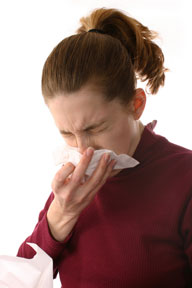Glycyrrhiza Uralensis Radix 甘草
Glycyrrhiza uralensis, also known as Chinese liquorice, common used in Traditional Chinese Medicine. Glycyrrhiza Uralensis Radix consists of the dried roots and rhizomes of Glycyrrhiza glabra L. It has been used in clinical medicine to moisture and relaxing, neutralize strong medicine, detoxification, ease pain, antispasmodic, modify the taste, relieve cough and reduce phlegm.
For throat swollen and painful, cough with sputum, palpitation and shortness of breath, weak spleen and stomach, fatique and loss of energy, gastrointestinal ulcer, cramps in abdominal and limps, healing of sore and carbuncle, alleviate poisonous or strong medicine, treat food poisoning and others.
甘草是一种传统的中药材,用途广泛。甘草的干燥根及地下根状茎,在中医学中被临床运用于滋润缓和,中和烈药,解毒、镇痛、解痉、矫味、镇咳祛痰等。
用于咽喉肿痛、咳嗽痰多、心悸气短、脾胃虚弱、倦怠乏力、肠胃道溃疡、脘腹、四肢挛急疼痛,痈肿疮毒,缓解药物毒性、烈性,食物中毒等。
Radix Platycodon Grandiflorum 桔梗
The root of this species is used extensively as an an expectorant and antitussive used to treat coughs, colds, upper respiratory infections, sore throats, tonsillitis, and chest congestion. In Chinese traditional medicine, Radix Platycodon has been used to treat cough with sputum, tonsillitis, pertussis, and asthma. Also used to treat stomatitis, peptic ulcers, and chronic inflammatory diseases.
此植物的根部被广泛用于镇咳祛痰,可治疗伤风咳嗽,上呼吸道感染,咽喉痛,扁桃体炎和胸闷。桔梗在传统中医里被用于治疗痰咳,扁桃体炎,百日咳和哮喘。也用于治疗胃溃疡,口腔炎和慢性炎症性疾病。
Stemona sessilifolia (Miq.) Miq., Stemona japonica (Bl.) Miq. or Stemona tuberosa Lour., is a plant of the Stemonaceae family; the dried tuberous root is used as a medicine. Its Chinese medicinal name is Baibu.
Pharmacological studies indicate that Stemona sessilifolia has anti-bacterial, anti-inflammatory, antitussive, antiasthmatic, parasiticidal effects, etc. In traditional Chinese medicine theory, Baibu moistens the lungs, stops coughing, and kills parasites, etc.
百部,百部科植物直立百部,蔓生百部或对叶百部,以干燥块根入药。
药理研究显示,百部有抗菌、消炎、镇咳、平喘、灭虱等作用。在传统中医里,百部可润肺止咳和杀虫等。
Bulbus Fritillaria Cirrhosa 川贝母
Fritillaria,precious chinese herbs for moistening lung and suppressing cough. It has been used for generations and the efficacy is remarkable. Bulbus Fritillaria Cirrhosa not only relieving cough and reducing sputum, also raise Yin, protect and moisten lung and remove heat, is a remedy for chronic cough and asthma. It can be found in Chinese medicine prescription for treatment of acute bronchitis, bronchial inflammation, tuberculosis and other diseases.
川贝母,润肺止咳的名贵中药材,应用历史悠久,疗效卓著,驰名中外。由于川贝母不仅具有良好的止咳化痰功效,而且能养肺阴、宣肺、润肺而清肺热,是一味治疗久咳痰喘的良药,因此,在许多治疗急性气管炎、支气管炎、肺结核等病症的中药方剂或中成药制剂中都有川贝。
Herba Mentha Haplocalyx 薄荷

Herba Mentha Haplocalyx, also known as mint. It has significant effects on throat clearing, common used for sore throat due to wind-heat, also have wind-heat evacuation effect, for treatment of exogenous wind-heat, headache, red eyes, sore throat and swollen, flatulence, mouth sores, toothache, sore scabies, urticaria.
薄荷,为唇形科薄荷属植物。薄荷清利咽喉作用显着,主要用于风热咽痛,兼有疏散风热作用。治外感风热,头痛,目赤,咽喉肿痛,食滞气胀,口疮,牙痛,疮疥,瘾疹。
Folium Eriobotrya Japonica 枇杷叶
 Folium Eriobotrya Japonica, also known as Loquat Leave or Pi Pa Ye. Its dried leaves have commonly been used in Traditional Chinese Medicine prescriptions as an antitussive and anti-inflammatory agent to clear-away lung heat, eliminate phlegm, lower the adverse-rising energy, relieve cough and regulate the stomach to restrain vomiting skin diseases, as well as in Japanese folk medicine as a diuretic, digestive and antipyretic agent to treat skin diseases, relieve inflammation, pain, cough and sputa.
Folium Eriobotrya Japonica, also known as Loquat Leave or Pi Pa Ye. Its dried leaves have commonly been used in Traditional Chinese Medicine prescriptions as an antitussive and anti-inflammatory agent to clear-away lung heat, eliminate phlegm, lower the adverse-rising energy, relieve cough and regulate the stomach to restrain vomiting skin diseases, as well as in Japanese folk medicine as a diuretic, digestive and antipyretic agent to treat skin diseases, relieve inflammation, pain, cough and sputa.蔷薇科植物枇杷,其干燥叶在传统中药处方用于镇咳消炎剂以清肺热,祛痰,降低逆行能量,止咳,调节肠胃以抑制呕吐皮肤疾病,在日本民间医药作为利尿,助消化和解热剂以治皮肤疾病,减轻炎症、疼痛、咳嗽和痰。
Source 资料来源:
http://zh.wikipedia.org/wiki/%E7%94%98%E8%8D%89http://herbalinformation.awardspace.com/?cm=p&fn=platycodon_grandiflorum
http://www.globalsciencebooks.info/JournalsSup/images/0806/MAPSB_2(1)18-23o.pdf








